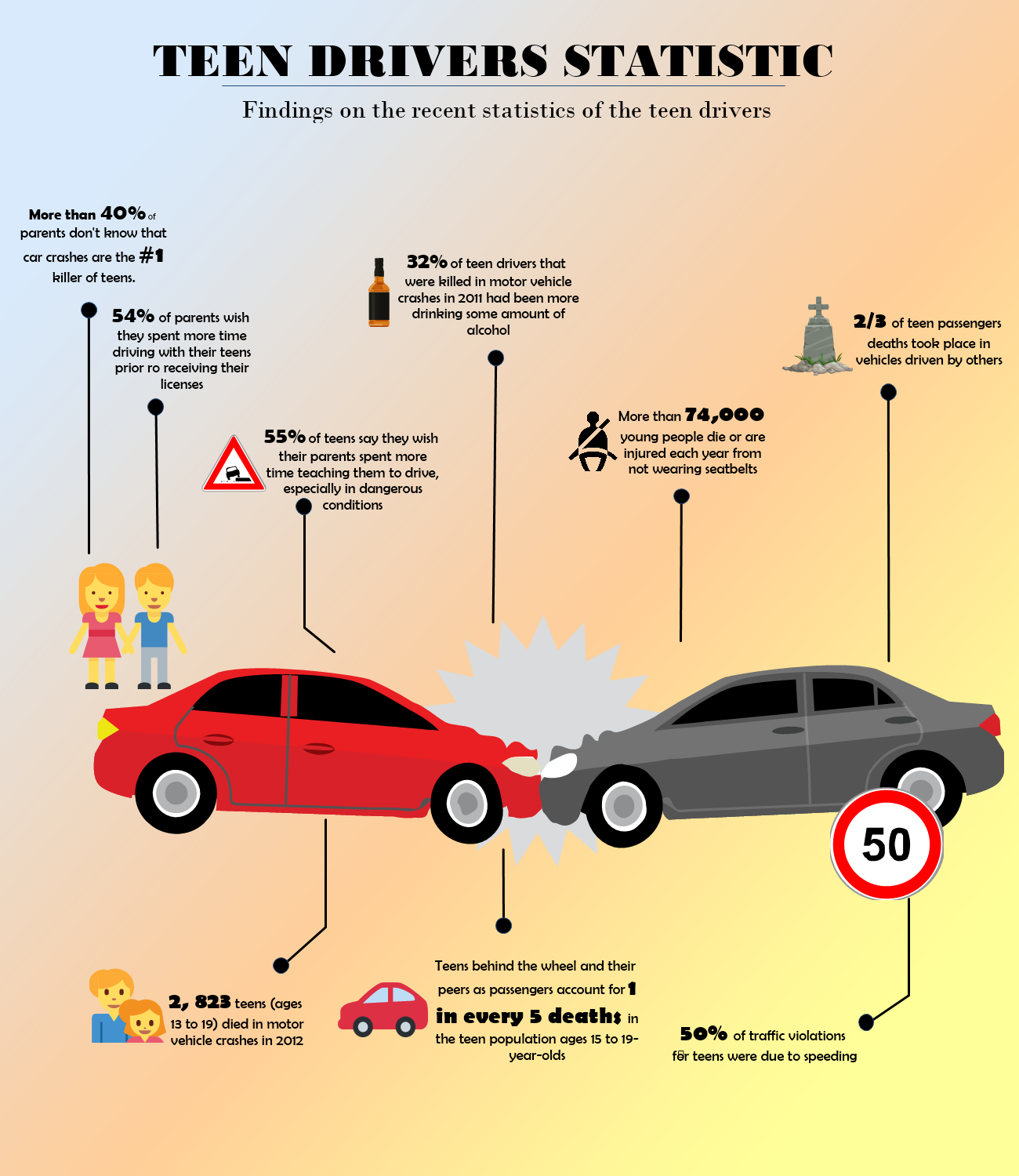This is a free Teen Drivers Statistic infographic template to educate drivers on the importance of protecting each other on the road, staying alert, paying attention to the signs, and taking the necessary safety precautions. The template is a 100% customizable and you can edit every aspect of it with a few simple clicks in MyDraw.

As car crashes are the leading cause of teen deaths, parents have to educate them on the most important rules and safety measures to follow on the road. Teen drivers have a higher rate of fatal crashes, mainly because of their immaturity, lack of skills, and lack of experience.
What to do?
- Make sure you have read and understood your Government law.
- Restrict night driving and passengers, prohibit driving while using the phone or other electronic devices, and require seat belt use at all times.
- Educate your teen about the dangers of drug and alcohol use. Outline the consequences of their actions.
- Set the example.
- Don't rely solely on a driver's education class to teach your teen to drive.
- Set the rules and don’t buy immediately a new car.
Statistics
- Teen Drivers, Cell Phones, and Texting- 32.8% of high school students nationwide have texted or e-mailed while driving, talking on a cell phone can double the likelihood of an accident and can slow a young driver's reaction time to that of a 70-year-old, 34% of teens age 16 and 17 admit that they send and respond to text messages while driving, 12% of distracted drivers involved in fatal car accidents were teens ages 15 to 19.
- Underage Drinking and Driving Statistics- 5.8% of 16- and 17-year-olds and 15.1% of 18- to 20-year-olds reported driving under the influence of alcohol, 33% of the young drivers' ages 15 to 20 who were killed in crashes had a BAC of .01 or higher and 28% had a BAC of .08 or higher, 60% of young drivers involved in fatal drinking and driving crashes didn't use a seat belt.
Risk factors
- Inexperienced- teens are more likely than older drivers to underestimate or not be able to recognize dangerous situations.
- Speeding- teens are more likely than older drivers to speed and allow shorter.
- Seat Belt Use- compared with other age groups, teens and young adults often have the lowest seat belt use rates.
- Alcohol Use- any amount of alcohol increases the risk of crashes among teens as compared with older drivers.
